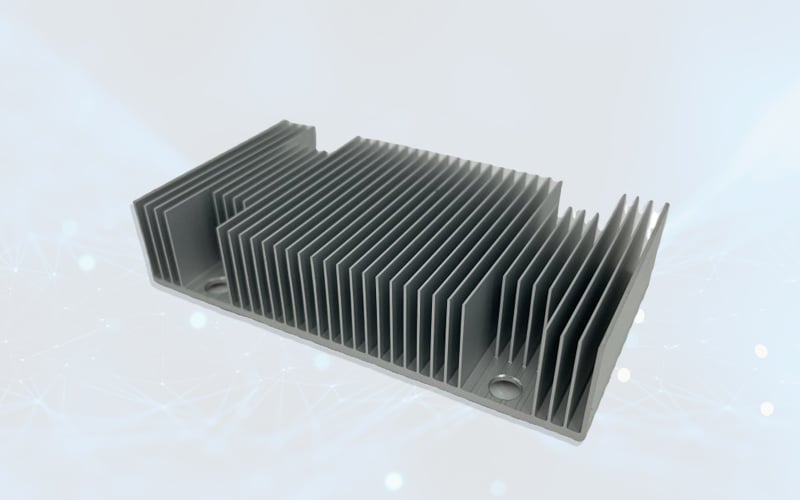A Comparison between skiving heat sinks and extrusion
Heat sinks are essential components in electronic devices that help dissipate heat and maintain optimal operating temperatures. Two popular methods for manufacturing heat sinks are skiving and extrusion. In this article, we will compare and analyze the pros and cons of these two techniques, providing valuable insights for engineers and manufacturers.
Skiving Heat Sinks
Skiving is a process that involves cutting thin metal sheets into the desired shape of the heat sink. This technique is particularly suitable for producing heat sinks with a high aspect ratio and complex geometries. Skived heat sinks offer several advantages:
1. Enhanced Thermal Performance
Skived heat sinks have a higher surface area, allowing for improved heat dissipation compared to extruded heat sinks. The thin metal sheets are tightly packed, resulting in efficient heat transfer. This makes skived heat sinks an excellent choice for applications with high power densities or limited space.
2. Customization and Flexibility
Skiving allows for greater design flexibility, enabling the creation of heat sinks with intricate fin patterns and varying fin heights. This customization capability is advantageous when dealing with specific thermal requirements or unique form factors. Skived heat sinks can be tailored to optimize cooling performance for different electronic devices.
3. Cost-Effective Production
Compared to other manufacturing methods, skiving is a cost-effective process for producing heat sinks. It allows for efficient use of materials, resulting in minimal waste. Skived heat sinks also require fewer machining steps, reducing production time and costs. This makes skiving a viable option for high-volume production.
Extrusion Heat Sinks
Extrusion is a widely used technique for manufacturing heat sinks. It involves pushing a heated aluminum billet through a shaped die to produce the desired profile. Extruded heat sinks offer their own set of advantages:
1. High Volume and Low Cost
Extrusion is a highly efficient process that allows for the mass production of heat sinks. The continuous nature of extrusion enables the creation of long heat sink profiles, reducing the need for assembly and minimizing costs. Extruded heat sinks are particularly suitable for applications where cost-effectiveness and high-volume production are crucial.
2. Good Thermal Performance
Although extruded heat sinks may not have the same surface area as skived heat sinks, they still provide effective thermal performance. The fins in extrusion heat sinks are evenly spaced and have a consistent thickness, ensuring efficient heat dissipation. Extruded heat sinks are commonly used in applications where moderate power densities are present.
3. Design Limitations
One limitation of extrusion is its design constraints. The extrusion process is better suited for heat sinks with simpler geometries and uniform fin heights. It can be challenging to achieve intricate designs or non-uniform fin heights with extrusion. This limitation may restrict the use of extrusion in certain applications that require specific thermal management requirements.
Conclusion
When comparing skiving and extrusion heat sinks, both methods have their own advantages and limitations. Skiving offers enhanced thermal performance, customization options, and cost-effective production. On the other hand, extrusion provides high-volume, low-cost production and good thermal performance. Engineers and manufacturers must carefully consider the specific requirements of their application before choosing the most suitable heat sink manufacturing technique.
skiving heat sinks, extrusion, heat sinks, thermal performance, customization, cost-effective production Comparison Between Skiving Heat Sinks and Extrusion Discover the differences between skiving heat sinks and extrusion, and learn which heat sink manufacturing technique is best suited for your application.

